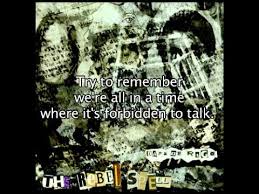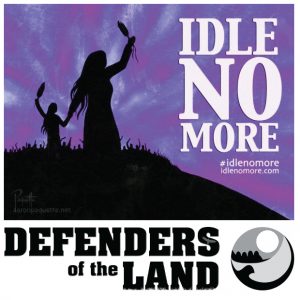A “common matrix of cultural knowledge,” is what Blanca Chester suggests narratives assume, in the work “Green Grass, Running Water: Theorizing the World of the Novel.” The Four Old Indians, are indeed a great example of characters that belong to such a matrix of cultural knowledge, however, it does exclude many non-First Nations.
As a reader of the contemporary novel, and assuming that not every reader will be of Native descent, how does one connect with the matrix? I believe that the Four Old Indians, Lone Ranger, Ishmael, Robinson Crusoe, and Hawkeye, represent the the common matrix of cultural knowledge in the way they represent the oral tradition of story-telling. This highlights the significance of story-telling, and what it means to Aboriginal cultures in terms of their past, present, and future. Chester illustrates that, for them, “the world is always brought into being, or created, through story” (46). The dialogues are a great way to submerse the reader in such a cultural vibe.
The first impressions I had of these characters were that they were just a comical, slightly strange, group of individuals. I must admit, I was met with simple confusion at first – seeing that there was something important by their means of telling stories, and then realizing the true meaning. The cycles of the stories are also beautifully represented with their interpretations of creation, conveying each woman of First Woman, Changing Woman, Thought Woman, and Old Woman. The immortality of story telling, as well as the cyclical nature, are represented in their entertaining dialogues.
Their creation stories are a slice of their cultural history. It is interesting and compelling to me, that there is always a key female in the stories of origin. Chester shows the history lesson by explaning, “King connects Robinson’s Okanagan Coyote with stories from the Blackfoot of Alberta, and the traditions of Thought Woman (Pueblo), First Woman (Navajo), Old Woman (Blackfoot, Dunne-za), and Changing Woman (Navajo)” (45). The readers are immersed in the cultural history of a wide range of nations.
Story-telling is a chief aspect of the cultural matrix, as Chester writes that the dialogue of the Old Indians “reflects oral tradition and First Nations and Native American perspectives of the world” (46). Through contemporary happenings and setting of the story, the common matrix of cultural knowledge is presented to and engulfs the reader in a literary and historical reality that is true for Aboriginal people.
Works Cited
Chester Blanca. “Green Grass Running Water: Theorizing the World of the Novel.” Canadian Literature 161-162. (1999). Web. April 04/2013.




